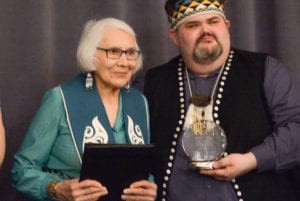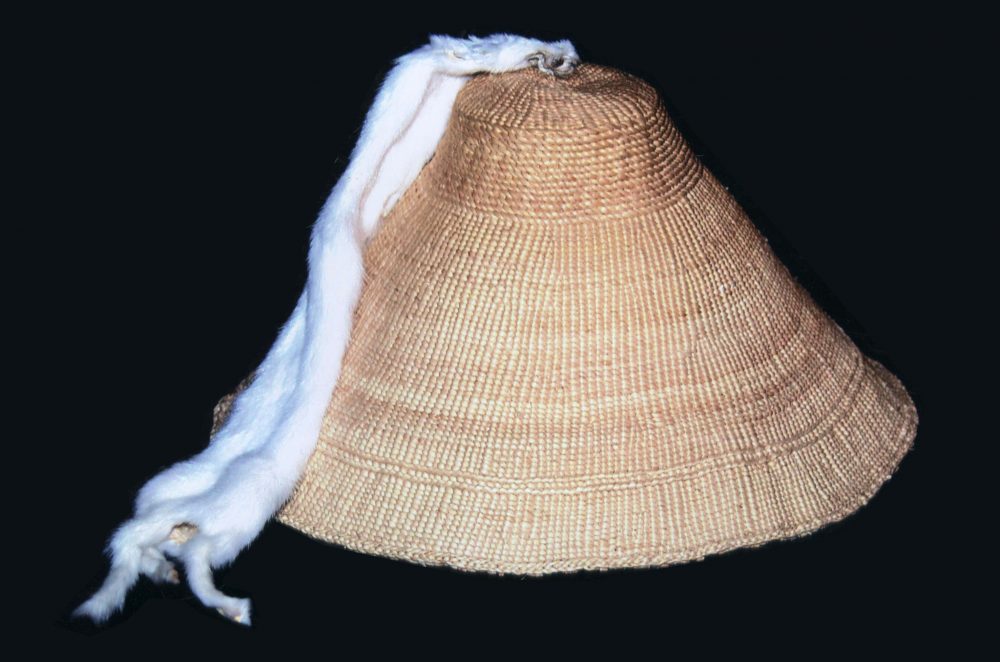Sealaska Heritage Institute earlier this year acquired a spruce-root hat made by Haida weaver Delores Churchill. The hat is a replica of one found with ancient remains.
The original hat was found in 1999 in a melting glacier by three hunters in a British Columbia park. Mummified human remains were found with it, and a helicopter was sent to retrieve the remains and artifacts. Churchill says when she heard about the hat, she wanted to learn more.
“When the helicopter was landing, the first thing they saw was this hat, this spruce root hat. They didn’t know it was spruce root at that time, but they saw this hat, and I became so excited. I felt an instant connection because I’m a weaver and I needed to see that hat.”
According to Sealaska Heritage Institute, the man is believed to have lived approximately 570 to 620 years ago. Pollen samples and other evidence indicated he traveled between the coast and inland. He was given a name in the Tutchone First Nations language that translates as “Long Ago Person Found.” Churchill says through DNA analysis, she found out that she was related to him.
“Amazingly, the only people related to this man are Tlingit, Haida and Bella Coola. The people who live there, if they’re related to him, it’s not through Champagne and Aishihik or Tutchone, it’s through Tlingit.”

Delores Churchill receives the Lifetime Achievement Award from CCTHITA president Richard Peterson in 2017 (photo credit CCTHITA).
Churchill says Sealaska and the Village of Klukwan wrote letters on her behalf requesting that she be allowed to study the hat. She was granted permission and discovered though mostly of Tlingit design, a variety of weaving techniques were used.
“Haidas weave counterclockwise and Tlingit weave clockwise. But there’s an area down near the edge of the hat where there are two rows that are going counterclockwise. So whoever did this hat knew both Haida and Tlingit techniques.”
She also rediscovered an extremely complicated edge known as the six-strand ending.
Churchill says she decided to add an ermine pelt to her replica of the hat.
“Because he probably was a high caste person to be able to be travel between (the coast and inland) in that country, so I put an ermine on it.”
Churchill says she considers herself a life-long student.
“Like I tell everyone, I am not a master. I am always studying. The people who wove the material in the museums, they’re the masters, and I’m still learning.”
Churchill was commissioned by Sealaska Heritage Institute, with support from the Rasmuson Foundation, to make the replica.
____________________________________________________________
Here is the complete 20-minute interview with Churchill where she gives more details about the hat, weaving techniques and her studies.






